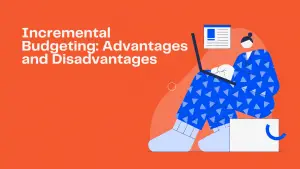Incremental budgeting is a form of the budgeting process based on the concept that a new budget can be prepared by making only some marginal changes to the current year’s budget.
In other words, with incremental budgeting, the amounts of the current budget are used as a base to which incremental assumptions are either added or subtracted from these amounts to arrive at the new budgeted amounts.
Simply, this budgeting process is based on slight changes from the preceding period’s budgeted results or actual results.
The important thing to note here is that no standard formula is there to determine the applicable marginal changes in the budgeting process.
The said changes are determined using certain assumptions based on last year’s budgeting and expenses amounts.

This type of budgeting approach is usually adopted by companies whose management is not intended to spend a lot of time and do not have enough resources to formulate the budget or do not think of any need to re-evaluate business.
5 Advantages of Incremental Budgeting
This process of budgeting is useful for many companies for a number of reasons, which includes;
- Incremental budgeting is the simplest budgeting approach as it uses the budget for the current period to project the upcoming budget. It does not need any further analysis and calculations. Instead, only a few assumptions are required. However, the main thing due to which most organizations adopt this budgeting approach is the simplicity of its execution process, which helps the management in time-saving and non-complexity of calculations as the calculations involved here are very straightforward.
- Due to the dependency on the amounts of the budget of prior periods, it is ensured that the budget will remain fairly consistent and relatively stable over the period of time.
- Like other budgeting techniques, this process does not require any detailed analysis, so it is easy to implement. That is why many companies adopt this approach of budgeting during the preparation of the budget.
- Different budgets for different departments may become a cause of conflict in a company. Due to incremental budgeting, the number of conflicts among the departments also comes down since all the departments are treated similarly. This approach eliminates rivalry or builds the value of equality among departments as all departments are given a similar amount of increase over the previous year. It makes sure that all the departments operating in a company operate consistently. With this budgeting approach, it is easier to keep everyone on the same page and avoid conflicts between departments.
- Under this budgeting approach, one can easily see and identify the impact of any change in the current year’s budget. This is because under this approach budget remains the same and consistent year after year. No significant change comes in the next year’s budget; hence if management makes any big change in the budget, one can easily identify it, and its impact can easily be observed.
6 Disadvantages of Incremental Budgeting
Although incremental budgeting provides easy calculations and implementation and allows for steady budgets, this method also has few limitations. The primary potential disadvantages of such a budgeting method are discussed below:
- Incremental budgeting may result in unnecessary spending on monetary resources. This is because departments may tend to utilize all the monetary resources to get an increased amount in the next period. They might spend the money in a place where there is no need. Under incremental budgeting, some criteria are set that each part of the budget will be slightly increased by a certain amount every year. There might be the chances that some of the departments do not need increased monetary help each year; however, they are given with extra amount. This is simply because this how this budgeting process works. Owing to this, this budgeting process may prove to be uneconomical and less efficient. Hence, under this approach, managers spend more as budgets are easily available, which may lead to unnecessary spending of funds, which is not justified.
- This method assumes a little change in budgetary allocations from the previous period and assumes that the working method shall remain unchanged in the current year. Thus, incremental budgeting may discourage the production of exclusive ideas and growth. As the new budget is based on the figures from last year’s budgets, there is little space to finance new innovative ideas or activities. Thus, this budgeting process discourages new ideas and does not encourage an improved and diversified business environment.
- About incremental budgeting, it is said that the budget is “Disconnect from reality.” This is because when the budget is prepared according to this approach, the actual results vary greatly from budgeted amounts. The main reason for such variation is that the budgeted amounts are based upon the previous year’s benchmark and are not forecasted for the next year.
- The main assumption behind the incremental budget is that the company’s operations will remain stable and constant with no major change compared to the previous year. Hence this budget mostly remains unresponsive to those changes that may result from some unanticipated factors or unforeseen circumstances during the year.
- Since the budget remains the same in the next period under this approach and no major changes come, the company’s management is reluctant to review the budget next year to save unnecessary expenses. This lacking of reviewing process by the company’s management makes the budget exposed to the risks of wastage, inappropriate assumptions, and many mistakes.
In short, it can be said that the incremental budgeting technique is applicable where the management of the company is sure that no significant change will come in the next year’s budget.
And it will remain almost unchanged in the upcoming year too. It would remain stable in the long term. Nevertheless, other budgeting techniques can be adopted where necessary.

